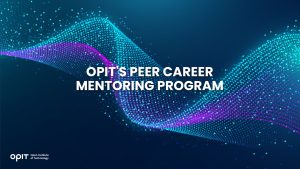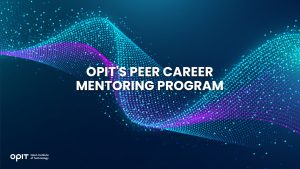

It’s clear that there’s a growing demand for qualified computer scientists – as well as professionals in related fields – throughout the world. In the U.S. alone, the field is expected to grow by 15% between 2021 and 2031, with approximately 377,500 job openings per year. Europe is no different. For instance, the European artificial intelligence (AI) industry is projected to achieve an average annual growth of 15.87% between 2024 and 2030, creating a multi-billion dollar industry in the process.
With such explosive growth, one would assume that getting a job in the tech field should be straightforward as long as a student has the appropriate skills.
That’s often not the case.
Though companies have a large appetite for talented and tech-literate students, they typically want to see industry certifications to bolster their formal education qualifications. Here, you’ll discover the impact these certifications can have on your career. Plus, you’ll learn which certifications are the most desirable and how OPIT’s degree programs align with those certifications.
How do Industry Certifications Help?
We start with the big question – are computing industry certifications even relevant?
After all, as a student, you’re already working towards a degree that provides proof that you’re capable in various technical fields. But even with that degree, you may find that employers favor those with specific certifications.
Why?
Here are some of the most important reasons.
Showcasing a Willingness to Learn
Obtaining specific certifications outside of your degree shows that you’re willing to continue your education beyond your formal studies. That’s vital. The computer science fields evolve so rapidly that what you learn as part of a degree may be obsolete – or, at best, outdated – within a few years. If you’re not doing everything you can to adapt to these changes, you get left behind. When an employer compares two candidates with the same degree against one another, they’ll invariably go for the one who shows more commitment to keeping their skills sharp.
That’s not all.
Industry certifications also show employers that you can take the theoretical knowledge you develop during a degree into real-life practice. Hence the “industry” part of the phrase. That also leads to the second reason why certifications are so crucial.
Certifications Prepare You for the World of Work
Though a degree program may attempt to emulate real-world environments, it may not fully set you up for the demands industry places on you. You’re working for yourself, rather than a company. Plus, the odds are that your degree may not cover specific applications of your knowledge that would be useful in a real-world setting.
When studying for industry certifications, you engage with courses developed by people who have worked for companies that are like – or adjacent to – the types of companies for which you intend to work. That’s crucial. A certification can prepare you for specific duties or roles you’d be expected to take during your career. The result is that the working world is less of a shock to the system for the student who achieves a certification than it would be for somebody who transitions directly from a degree into industry.
Validation of What You’ve Learned
Validation through industry certifications works on two levels.
For the student, completion of certification serves as proof to themselves that they can put what they’ve learned during their degree course into action. Should you take a certification, you’ll be confronted with real-world scenarios and, often, be tasked with coming up with solutions to problems that real companies faced in the past. When you pass, you’ll know that you have verified proof of your competency within the context of working for a company.
That’s where the second level comes in – validation to a potential employer.
A degree is far from worthless to a potential employer. Most require them for any technical role, meaning you must complete your formal education. However, employers are also aware that many degree programs don’t prepare students for the realities of industry. So, a student who only has a degree on their resume may fall by the wayside compared to one who has an industry certification.
Those who do have certifications, however, have proof of their competency that validates them in the eyes of employers.
The Most Valuable Industry Certifications for Computer Science Students
With the value of industry certifications to supplement your degree established, the next question is obvious:
Which certifications are the most valuable?
You may have dozens to choose from, with the obvious answer being that the certification that’s best for you is the one that most closely aligns with the field you intend to enter. Still, the following are some of the most popular among computing students and recent graduates.
Prince 2 Foundation
Where your degree equips you with computer science fundamentals, the PRINCE2 Foundation course focuses on project management. It can be taken as a three-day course – virtually or in a classroom – that teaches the titular method for overseeing complex projects. Beyond the three-day intensive versions of the course, you can also take an online self-guided version that grants you a 12-month license to the course’s materials.
CAPM (Certified Associate in Project Management)
Again focusing on project management, the CAPM can be an alternative or a complement to a PRINCE2 certification. The 150-question exam covers predictive planning methodologies, Agile frameworks, and business analysis. Plus, it’s available in several major European languages, as well as Japanese and Arabic.
CompTIA Network+
Network implementation, operations, and security are the focuses of this course, which equips you with networking skills that apply to almost any industry system. Consider this course if you wish to enter a career in network security, IT support, or if you have designs on becoming a data architect.
AWS Cloud Practitioner Essentials
Offered via several platforms, including Amazon Web Services and Coursera, the AWS Cloud Practitioner Essentials course does exactly what it says:
Teaches you the foundations of the AWS cloud.
You’re paired with an expert instructor, who teaches you about the AWS Well-Architected Framework and the models relevant to the AWS cloud. It’s a good choice not just for computer science students, but those who intend to enter the sales, marketing, or project management spheres.
AWS Certified Developer Associate
Where the above course teaches the fundamentals of the AWS cloud, this one hones in on developing platforms within the AWS framework. It’s recommended that you take the essentials course first, gaining experience with AWS tech in the process, and have knowledge of at least one programming language. The latter can come from your degree.
All of the course resources are free, though you do have to pay a fee of $150 to take the 65-question exam related to the certification.
CISSP (Certified Information Systems Security Professional)
Cybersecurity is the focus of the CISSP, with successful students developing proven skills in designing, implementing, and managing high-end cybersecurity programs. You also become an ISC2 member when you receive your CISSP, giving you access to further educational tools and an expansive network you can use to further your career.
CISM (Certified Information Security Manager)
Like the CISSP, the CISM is for any student who wants to enter the growing field of cybersecurity. It covers many of the same topics, with the program’s website claiming that 42% of its students received a pay increase upon successful completion of the course.
CRISC (Certified in Risk and Information Systems Control)
Though adjacent to the two cybersecurity programs above, the CRISC focuses more on risk management in the context of IT systems. You’ll learn how to enhance – and demonstrate said enhancement of – business resilience, as well as how to incorporate risk management into the Agile methodology.
CEH (Certified Ethical Hacker)
When companies implement cybersecurity programs, they need to test them against the hackers that they’re trying to keep away from their data. Enter ethical hackers – professionals who use the same tricks that malicious hackers use to identify issues in a network. With the CEH, you gain an industry qualification that showcases your hacking credentials as it delivers experience in over 500 unique attack types.
Agile and Scrum Certifications
Both Agile and Scrum are management frameworks that have become extremely popular in the computer science field, making certifications in either extremely valuable. The idea with these certifications is to build your technical expertise into an established methodology. For context to why that’s important, consider this – 71% of American companies now use the Agile methodology due to its high success rate.
Where Do OPIT’s Courses Fit In?
If you’re a current or prospective OPIT student, you need to know one thing:
An OPIT degree isn’t the same as one of these industry certifications.
However, all OPIT degree programs are designed to align with the teachings of these certifications. They’re created by professionals who have industry experience – and can build real-world projects into their courses – to ensure that you leave OPIT with more than theoretical knowledge.
Instead, you’ll have a foundation of practical skills to go along with your technical talents, preparing you to take any of these industry certifications later in your career. For instance, our MSc in Enterprise Cybersecurity degree aligns with the CISM and CISSP certifications, meaning you’ll be well-prepared for the concepts introduced in those courses.
An OPIT degree complements the certifications you may need later in your career. If you’re not already an OPIT student, check out our range of online courses – all of which are EU-accredited and career-aligned – to take your first step toward a career in computer science.
Related posts

Source:
- Raconteur, published on November 06th, 2025
Many firms have conducted successful Artificial Intelligence (AI) pilot projects, but scaling them across departments and workflows remains a challenge. Inference costs, data silos, talent gaps and poor alignment with business strategy are just some of the issues that leave organisations trapped in pilot purgatory. This inability to scale successful experiments means AI’s potential for improving enterprise efficiency, decision-making and innovation isn’t fully realised. So what’s the solution?
Although it’s not a magic bullet, an AI operating model is really the foundation for scaling pilot projects up to enterprise-wide deployments. Essentially it’s a structured framework that defines how the organisation develops, deploys and governs AI. By bringing together infrastructure, data, people, and governance in a flexible and secure way, it ensures that AI delivers value at scale while remaining ethical and compliant.
“A successful AI proof-of-concept is like building a single race car that can go fast,” says Professor Yu Xiong, chair of business analytics at the UK-based Surrey Business School. “An efficient AI technology operations model, however, is the entire system – the processes, tools, and team structures – for continuously manufacturing, maintaining, and safely operating an entire fleet of cars.”
But while the importance of this framework is clear, how should enterprises establish and embed it?
“It begins with a clear strategy that defines objectives, desired outcomes, and measurable success criteria, such as model performance, bias detection, and regulatory compliance metrics,” says Professor Azadeh Haratiannezhadi, co-founder of generative AI company Taktify and professor of generative AI in cybersecurity at OPIT – the Open Institute of Technology.
Platforms, tools and MLOps pipelines that enable models to be deployed, monitored and scaled in a safe and efficient way are also essential in practical terms.
“Tools and infrastructure must also be selected with transparency, cost, and governance in mind,” says Efrain Ruh, continental chief technology officer for Europe at Digitate. “Crucially, organisations need to continuously monitor the evolving AI landscape and adapt their models to new capabilities and market offerings.”
An open approach
The most effective AI operating models are also founded on openness, interoperability and modularity. Open source platforms and tools provide greater control over data, deployment environments and costs, for example. These characteristics can help enterprises to avoid vendor lock-in, successfully align AI to business culture and values, and embed it safely into cross-department workflows.
“Modularity and platformisation…avoids building isolated ‘silos’ for each project,” explains professor Xiong. “Instead, it provides a shared, reusable ‘AI platform’ that integrates toolchains for data preparation, model training, deployment, monitoring, and retraining. This drastically improves efficiency and reduces the cost of redundant work.”
A strong data strategy is equally vital for ensuring high-quality performance and reducing bias. Ideally, the AI operating model should be cloud and LLM agnostic too.
“This allows organisations to coordinate and orchestrate AI agents from various sources, whether that’s internal or 3rd party,” says Babak Hodjat, global chief technology officer of AI at Cognizant. “The interoperability also means businesses can adopt an agile iterative process for AI projects that is guided by measuring efficiency, productivity, and quality gains, while guaranteeing trust and safety are built into all elements of design and implementation.”
A robust AI operating model should feature clear objectives for compliance, security and data privacy, as well as accountability structures. Richard Corbridge, chief information officer of Segro, advises organisations to: “Start small with well-scoped pilots that solve real pain points, then bake in repeatable patterns, data contracts, test harnesses, explainability checks and rollback plans, so learning can be scaled without multiplying risk. If you don’t codify how models are approved, deployed, monitored and retired, you won’t get past pilot purgatory.”
Of course, technology alone can’t drive successful AI adoption at scale: the right skills and culture are also essential for embedding AI across the enterprise.
“Multidisciplinary teams that combine technical expertise in AI, security, and governance with deep business knowledge create a foundation for sustainable adoption,” says Professor Haratiannezhadi. “Ongoing training ensures staff acquire advanced AI skills while understanding associated risks and responsibilities.”
Ultimately, an AI operating model is the playbook that enables an enterprise to use AI responsibly and effectively at scale. By drawing together governance, technological infrastructure, cultural change and open collaboration, it supports the shift from isolated experiments to the kind of sustainable AI capability that can drive competitive advantage.
In other words, it’s the foundation for turning ambition into reality, and finally escaping pilot purgatory for good.

The Open Institute of Technology (OPIT) is the perfect place for those looking to master the core skills and gain the fundamental knowledge they need to enter the exciting and dynamic environment of the tech industry. While OPIT’s various degrees and courses unlock the doors to numerous careers, students may not know exactly which line of work they wish to enter, or how, exactly, to take the next steps.
That’s why, as well as providing exceptional online education in fields like Responsible AI, Computer Science, and Digital Business, OPIT also offers an array of career-related services, like the Peer Career Mentoring Program. Designed to provide the expert advice and support students need, this program helps students and alumni gain inspiration and insight to map out their future careers.
Introducing the OPIT Peer Career Mentoring Program
As the name implies, OPIT’s Peer Career Mentoring Program is about connecting students and alumni with experienced peers to provide insights, guidance, and mentorship and support their next steps on both a personal and professional level.
It provides a highly supportive and empowering space in which current and former learners can receive career-related advice and guidance, harnessing the rich and varied experiences of the OPIT community to accelerate growth and development.
Meet the Mentors
Plenty of experienced, expert mentors have already signed up to play their part in the Peer Career Mentoring Program at OPIT. They include managers, analysts, researchers, and more, all ready and eager to share the benefits of their experience and their unique perspectives on the tech industry, careers in tech, and the educational experience at OPIT.
Examples include:
- Marco Lorenzi: Having graduated from the MSc in Applied Data Science and AI program at OPIT, Marco has since progressed to a role as a Prompt Engineer at RWS Group and is passionate about supporting younger learners as they take their first steps into the workforce or seek career evolution.
- Antonio Amendolagine: Antonio graduated from the OPIT MSc in Applied Data Science and AI and currently works as a Product Marketing and CRM Manager with MER MEC SpA, focusing on international B2B businesses. Like other mentors in the program, he enjoys helping students feel more confident about achieving their future aims.
- Asya Mantovani: Asya took the MSc in Responsible AI program at OPIT before taking the next steps in her career as a Software Engineer with Accenture, one of the largest IT companies in the world, and a trusted partner of the institute. With a firm belief in knowledge-sharing and mutual support, she’s eager to help students progress and succeed.
The Value of the Peer Mentoring Program
The OPIT Peer Career Mentoring Program is an invaluable source of support, inspiration, motivation, and guidance for the many students and graduates of OPIT who feel the need for a helping hand or guiding light to help them find the way or make the right decisions moving forward. It’s a program built around the sharing of wisdom, skills, and insights, designed to empower all who take part.
Every student is different. Some have very clear, fixed, and firm objectives in mind for their futures. Others may have a slightly more vague outline of where they want to go and what they want to do. Others live more in the moment, focusing purely on the here and now, but not thinking too far ahead. All of these different types of people may need guidance and support from time to time, and peer mentoring provides that.
This program is also just one of many ways in which OPIT bridges the gaps between learners around the world, creating a whole community of students and educators, linked together by their shared passions for technology and development. So, even though you may study remotely at OPIT, you never need to feel alone or isolated from your peers.
Additional Career Services Offered by OPIT
The Peer Career Mentoring Program is just one part of the larger array of career services that students enjoy at the Open Institute of Technology.
- Career Coaching and Support: Students can schedule one-to-one sessions with the institute’s experts to receive insightful feedback, flexibly customized to their exact needs and situation. They can request resume audits, hone their interview skills, and develop action plans for the future, all with the help of experienced, expert coaches.
- Resource Hub: Maybe you need help differentiating between various career paths, or seeing where your degree might take you. Or you need a bit of assistance in handling the challenges of the job-hunting process. Either way, the OPIT Resource Hub contains the in-depth guides you need to get ahead and gain practical skills to confidently move forward.
- Career Events: Regularly, OPIT hosts online career event sessions with industry experts and leaders as guest speakers about the topics that most interest today’s tech students and graduates. You can join workshops to sharpen your skills and become a better prospect in the job market, or just listen to the lessons and insights of the pros.
- Internship Opportunities: There are few better ways to begin your professional journey than an internship at a top-tier company. OPIT unlocks the doors to numerous internship roles with trusted institute partners, as well as additional professional and project opportunities where you can get hands-on work experience at a high level.
In addition to the above, OPIT also teams up with an array of leading organizations around the world, including some of the biggest names, including AWS, Accenture, and Hype. Through this network of trust, OPIT facilitates students’ steps into the world of work.
Start Your Study Journey Today
As well as the Peer Career Mentoring Program, OPIT provides numerous other exciting advantages for those who enroll, including progressive assessments, round-the-clock support, affordable rates, and a team of international professors from top universities with real-world experience in technology. In short, it’s the perfect place to push forward and get the knowledge you need to succeed.
So, if you’re eager to become a tech leader of tomorrow, learn more about OPIT today.
Have questions?
Visit our FAQ page or get in touch with us!
Write us at +39 335 576 0263
Get in touch at hello@opit.com
Talk to one of our Study Advisors
We are international
We can speak in:


